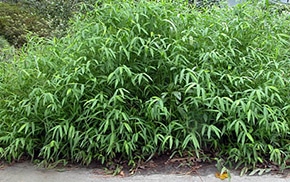With this week marking the first heat wave of 2013, it’s very important to make sure your workers are aware of the potential dangers of heat stress and take the necessary precautions to stay safe. Working in high temperatures and humidity, direct sun exposure, and no breeze or air circulation, especially when doing heavy physical labor as that required in the landscape and construction industries, can greatly put workers at risk of heat related illnesses. Dehydration, heat exhaustion, and heat stroke are the three progressive conditions of heat stress. If left untreated, the advancement from dehydration to heat stroke can take as little as 20 minutes, or hours, depending on the individual.
Dehydration
Dehydration is the least serious heat-related illness but can quickly progress into more serious conditions. The symptoms of dehydration include thirst, decreased perspiration, headache, cool & clammy feeling, headache, poor appetite, and dark colored urine.
Heat Exhaustion
Heat exhaustion occurs when there is an excessive loss of water and salt due to excessive sweating. It is associated with headaches, dizziness, feeling lightheaded or fainting, nausea and vomiting, weakness, irritability, confusion, thirst, heavy sweating, fast and shallow breathing, and body temperatures over 100.4\’b0 F. If a worker is showing signs of heat exhaustion, they should be removed from the work site and brought to a cool, shaded or air conditioned area. Encourage them to drink liquids and remove any unnecessary clothing. Try to cool the worker with cold compresses and water to their head, face, and neck. The worker should be brought to a clinic or emergency room for medical evaluation, but if the symptoms worsen, call 911 immediately.
Heat Stroke
Heat stroke is the most serious heat related illness and may result in death or permanent disability if not treated immediately. This occurs when the body’s temperature regulating system fails and the body can no longer sweat and cool itself. This causes body temperatures to rise rapidly above 104F within 10-15 minutes. The signs of heat stroke are dry, hot skin, no sweating, confusion, hallucinations, chills, loss of vision or consciousness, slurred speech, and seizures or convulsions. If you suspect a co-worker is suffering from heat stroke, call 911 immediately and notify their supervisor. Bring them to a cool, shaded or air-conditioned location and try to cool them by showering them with water until emergency responders arrive.
Steps Employer’s Should Take to Prevent Heat-Related Illness
Although there are no specific laws and regulations related to heat stress, it is stated in the OSHA General Duty Clause that employers are required to provide \’93employment and a place of employment which are free from recognized hazards that are likely to cause death or serious physical harm to employees.\’94 To make sure all your workers stay safe on these hot summer days, follow these important guidelines:
- Establish a heat stress training program to educate your employees about the hazards of heat stress, responsibility for taking measures to prevent heat stress, the dangers of drugs and alcohol in hot work environments, how to recognize signs and symptoms on yourself and your co-workers, first aid procedures, and the use of Personal Protective Equipment during hot conditions.
- Schedule work, especially labor intensive tasks, for the cooler parts of the day
- Acclimatize your workers to longer periods of work in the heat, especially for new employees that are not used to working outside in such extreme elements.
- Reduce the physical demands of workers such as excessive lifting or digging with heavy objects. Provide additional machinery or assign extra crews to the job.
- Provide cold water or liquids to workers
- Remind workers to drink small amounts of water before they become thirsty to maintain hydrated
- Schedule frequent rest periods with water in shaded locations, or in an air-conditioned building.
- Workers required to wear Personal Protective Equipment (PPE), particularly semi-permeable or impermeable clothing (Tyvek or Rubber), should be closely monitored when the outside temperature exceeds 70\’b0F and when performing labor intensive tasks.
- Don\’92t send home or leave unattended a worker with symptoms of heat exhaustion or heat stroke, this should not be done unless a physician approves the worker is ok.
Steps Employees Should take to Avoid Heat Stress
- Drink plenty of water plenty of water frequently, roughly one cup every 15 minutes to never become thirsty.
- Avoid beverages containing caffeine and sugar, and alcoholic beverages
- Eat salty snacks to replenish sodium in your body
- Wear lightweight, light-colored, loose-fitting clothing such as cotton which is very breathable
- Gradually build up to heavy work, and schedule heavy work in the morning or evening when its coolest
- Take more breaks in extreme heat and humidity in a shaded, cooler area if possible
- Recognize the signs and symptoms of heat stress in yourself and coworkers. If you suspect a co-worker is suffering from heat exhaustion or heat stroke, call 911 and notify your supervisor immediately.
- Be aware that certain medical conditions and medications make people more susceptible to heat-related illnesses. High blood pressure, high cholesterol, obesity, poor physical shape, and anti-inflammatory medications put people at a higher risk.
- Be aware that PPE may increase the risk of heat stress
This week let\’92s all take measures to keep ourselves and our employees safe on the job in this extreme heat.
For more information on the risks of heat stress, please visit the following links:
http://www.cdc.gov/niosh/topics/heatstress/
http://www.osha.gov/OshDoc/data_Hurricane_Facts/heat_stress.pdf
http://www.cpwr.com/hazpdfs/hazheat.pdf
https://www.landcarenetwork.org/riskmgmt/ssense/May09.pdf


















